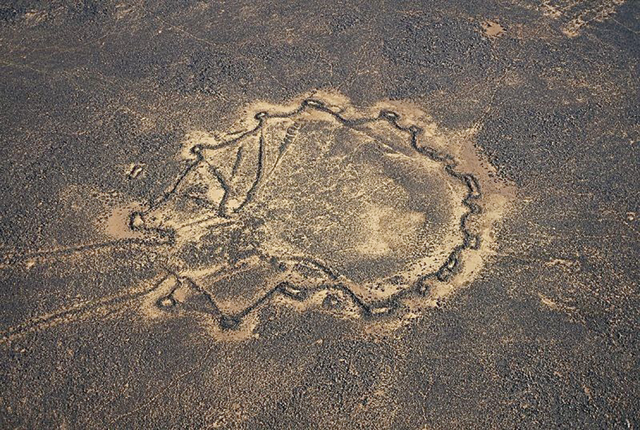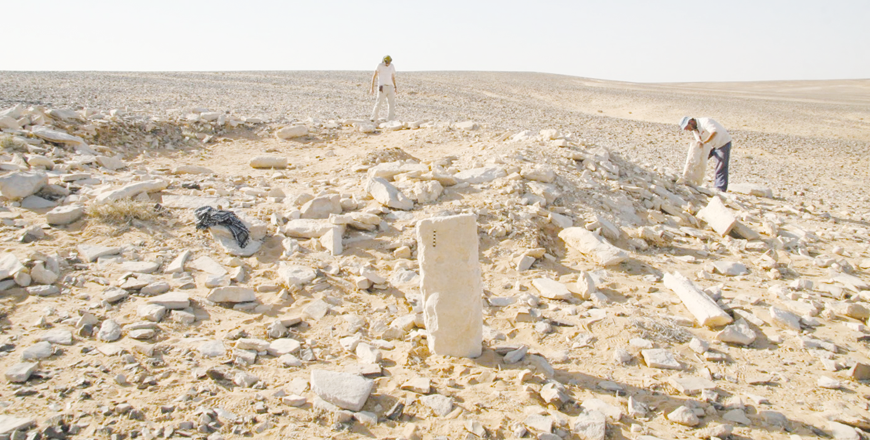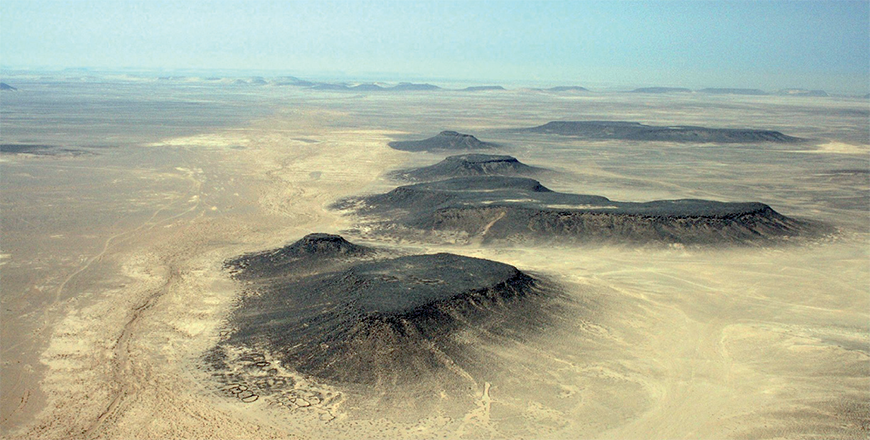You are here
Stone kites: Unveiling mystery of ancient game traps across deserts
By Saeb Rawashdeh - Dec 20,2023 - Last updated at Dec 20,2023

Remains of an ancient desert kite between As Safawi and Qasr Burqu, Mafraq, Jordan (Photo courtesy of Amusing Planet)
AMMAN — Desert kites are human made stone structures with a convergent shape, which have lengths ranging from less than a hundred metres to several kilometres, and heights of less than one metre. These enclosures were used as a trap for wild game and were first detected by the Royal Air Force pilots who flew from Baghdad to Cairo in 1920s. They were named kites because of their rhomboidal shape.
Over the past few decades, many more desert kites have been recognised across north Arabia, the Syrian Desert and the Black Desert.
“On the surface, desert kites seem simple to understand. Traps of this general type for hunting wild game are widely known around the world, from North America and Scandinavia to Central Asia, Armenia and Tibet.”
“Kite like structures have also recently been reported in Yemen and the Nile Valley,” noted Alison Betts from The University of Sydney, adding that the walls directed animals into an enclosure, where waiting hunters killed them, usually in large numbers.
Some scholars speculated that these enclosures were also used for herding of domestic animals.
Later explorers mention in their works structures used for hunting in 16th and 17th centuries.
In addition, a number of travellers’ accounts described such structures used for hunting from the sixteenth to the early twentieth century. However, none of them mentions their use for herding.
“The kites of eastern Jordan are found largely in the Black Desert, a broad strip of lava fields stretching across eastern Jordan from southern Syria into northern Saudi Arabia, although some have recently been found in the limestone area around the southerly Jafr,” Betts said, adding that in a landscape dotted with ancient volcanic cones, the extruded basalts have weathered into endless boulder fields broken by deep wadis and expanses of white mudflats.
This distinctive landscape makes the basalt region a well-defined study zone, which can generally be examined as a discrete unit, she continued, noting that the exception is in the north, where the land rises to Jebel Druze in southern Syria.
The types and orientations of kites in this region differ somewhat from those of the flatter south, with a zone of mixed types and orientations at the point of interface in northern Jordan, near the Bronze Age site of Jawa.
“Unfortunately, from the outset we need largely to dismiss one of the key bodies of evidence, the travellers’ tales. All of these record events in limestone country, in and around the Palmyrene in central Syria. Almost all of them describe how once the animals, normally gazelles, run into the enclosure, they are forced through narrow openings into pits where they are killed, either through self-injury or by hunters,” Betts underlined.
However, in all the kites so far examined in the field in Jordan and Syria, probably several dozen, no traces of pits have been found; and there are no 19th or early 20th century descriptions of the use of kites in the Black Desert, probably because it is remote, rarely frequented by foreign travellers and had a reputation of an area infested with brigands.
“Field survey in Jordan has failed to identify regular visible gaps in the enclosure walls that might otherwise suggest the use of a killing-pit strategy, but the travellers’ accounts do still provide an important resource for the methods and motives of communal hunts,” Betts said.
Related Articles
AMMAN — Al Jafr is a town located near Maan, in the south-eastern region of Jordan, within the area of Jibal Khashabiyeh.
AMMAN — The eastern Black Desert is an area between modern Syria, Jordan and Saudi Arabia with plenty of evidence for the hunting activities
AMMAN — The Western Harra Survey (WHS), started in 2015, has been investigating the north-east of the Azraq basin, noted a British archaeolo


















